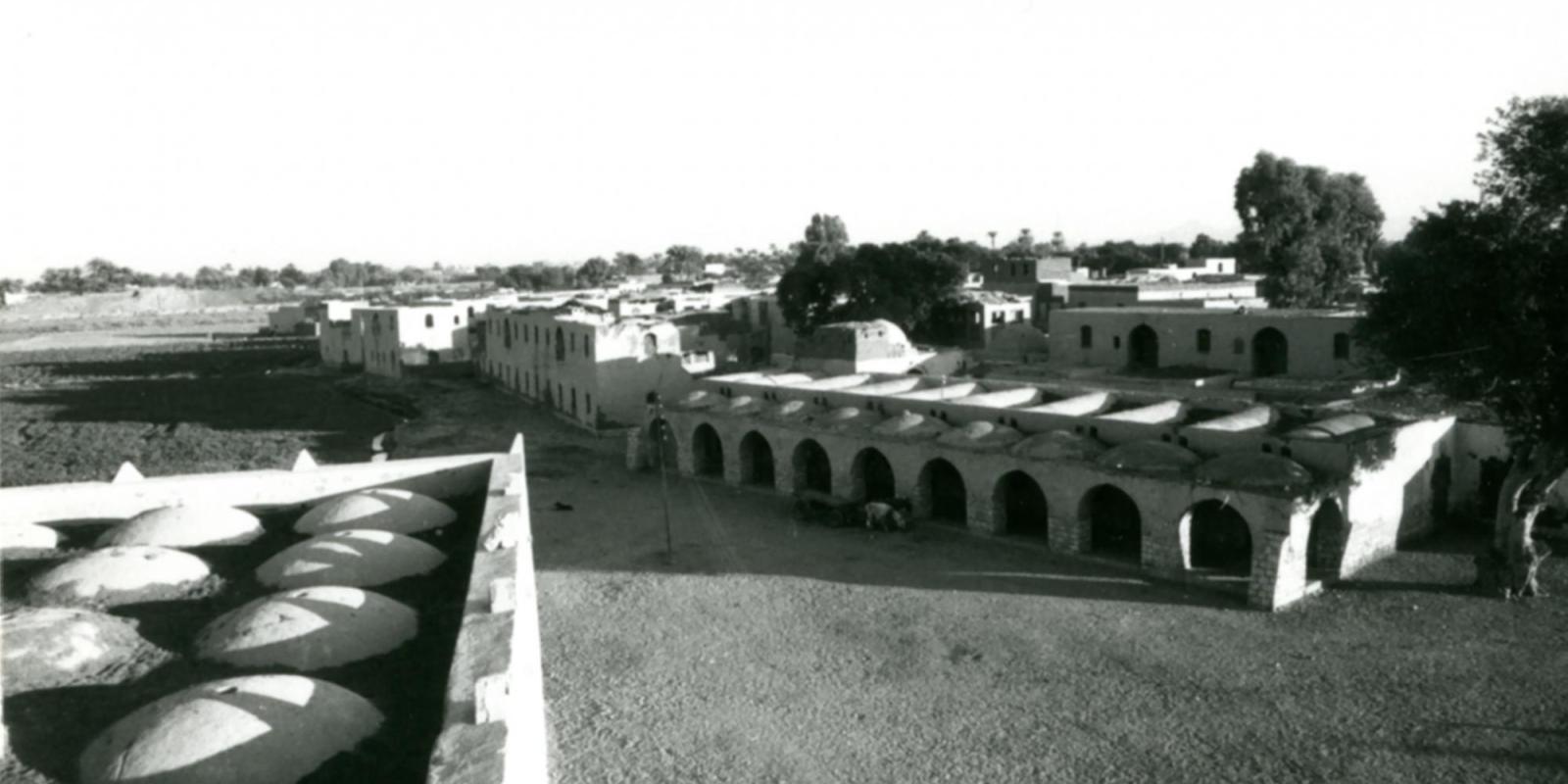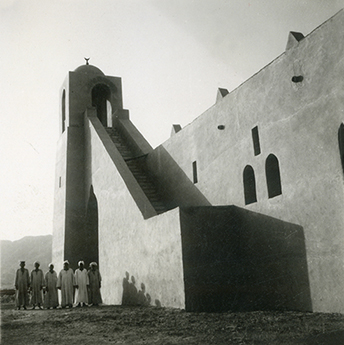
AUC Contributes Hassan Fathy Archives for Restoration of New Gourna
Archives from the Hassan Fathy Collection have recently surfaced to the spotlight from AUC’s Rare Books and Special Collections Library to guide the restoration of New Gourna – Fathy’s most famous project and now a World Heritage Site.
Built between 1946 and 1949, the New Gourna village has experienced significant deterioration in recent decades, inspiring several plans for its restoration that have not come to fruition until now. This UNESCO-sponsored project, however, is set to succeed in preserving Hassan Fathy’s well-known experiment at constructing an ideal village, a plan that perfectly embodies the innovative architect’s mission and values.

With the help of AUC’s Rare Books and Special Collections Library and the backing of UNESCO, the National Organization for Urban Harmony was able to concretize plans for revival of the site and restoration of its buildings, guided by the original drawings, documents and images from AUC’s Hassan Fathy Collection.
“We’re happy to see the Hassan Fathy Collection used for restoration purposes,” said Ola Seif, assistant director and curator for photography in the Rare Books and Special Collections Library. “For the past 10 years, it has been a wonderful source for many researchers worldwide, and soon, AUC Press will publish a thoroughly researched book titled Hassan Fathy in His Time. So the collection is really being explored as Hassan Fathy would have liked it to be, and to serve the purposes of his architectural ideology.”
Considered one of the first architects to make “appropriate technology” a principle of designing modern buildings, Fathy constructed the New Gourna village around the unique needs of its inhabitants. In the process, he was able to assist in relocating an entire community that had previously been living near archeological Pharaonic sites. To build a “better village,” Fathy used local materials and traditional mud bricks, thereby empowering those in need to build their own affordable housing and reflecting the community’s connection with its environment.
“With his support of the Cairo Heritage Development Committee, President Francis Ricciardone was very intent on supporting this project,” noted Balsam Sakory, assistant director of the regional architecture collection in the Rare Books and Special Collections Library. “Our collaboration with the National Organization for Urban Harmony started when their director sent a formal letter to President Ricciardone asking for AUC’s support.”
The Rare Books and Special Collections Library was also central in curating an exhibition for the project’s launch event at the Cairo Citadel. Through photographic archives, the exhibition traced the original construction of the village and Fathy’s architectural style, paying homage to his vision for New Gourna.
In one corner, visitors were also able to see a mud brick encased in glass – a tribute to Fathy’s emphasis on using materials from the local environment. The final segment of the photographic gallery presented digital images that offered a peek into plans for reconstruction of some of the New Gourna buildings.
Before exploring the exhibition, guests of the launch event heard from Tarek Waly, CEO of the Tarek Waly Center and consultant for the restoration project, as he introduced the main strategies for restoration. Additionally, Ghaith Fariz, Cairo’s UNESCO director, spoke to the significance of Fathy’s architecture and ideology.
The first stage of the project will tackle the village khan and mosque. Later stages will move on to rehabilitating the theater, marketplace, Fathy’s residence, the village hall and main square, with plans to also increase the efficiency of the roads approaching the site. The project involves plans to reuse the buildings according to the needs of the villagers, with the possibility of converting some areas into artist studios, a cultural center, a center for youth and, potentially, a training center to continue communicating Fathy’s mission and methods.
